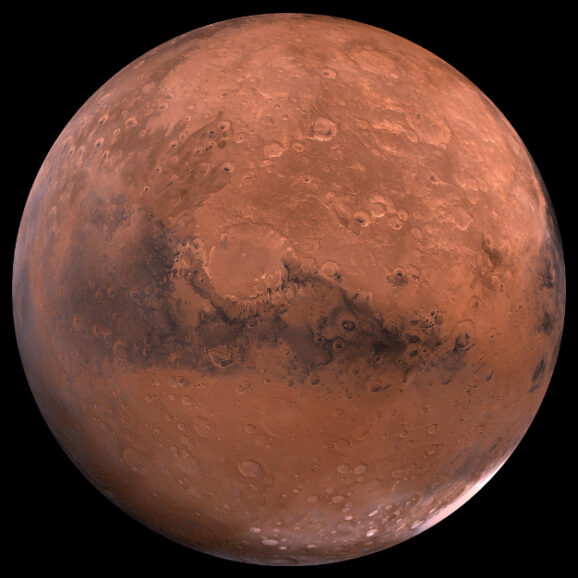Is Going To Mars A NASA Pipe Dream?
This article is more than 2 years old
 Both NASA and President Obama—at least, early on, before budget realities called for revisions—have outlined goals to get humans to the Red Planet by 2030. Whether or not that’s actually going to happen is up for debate. According to the National Research Council, the space agency’s current plan won’t get us there, and to continue to pursue this course “is to invite failure, disillusionment, and the loss of the longstanding international perception that human spaceflight is something the United States does best.” In other words, NASA just got busted.
Both NASA and President Obama—at least, early on, before budget realities called for revisions—have outlined goals to get humans to the Red Planet by 2030. Whether or not that’s actually going to happen is up for debate. According to the National Research Council, the space agency’s current plan won’t get us there, and to continue to pursue this course “is to invite failure, disillusionment, and the loss of the longstanding international perception that human spaceflight is something the United States does best.” In other words, NASA just got busted.
Congress authorized the report, which took the NRC 18 months and cost more than $3 million dollars. One of the findings is that on its current trajectory, NASA sorely lacks the funding to make a manned Mars mission happen, even if Obama’s vision pans out. Hmm…where have we heard that before?
“Absent a very fundamental change in the nation’s way of doing business, it is not realistic to believe that we can achieve the consensus goal of reaching Mars,” said Mitch Daniels, co-chair of the committee. The NRC also pinpointed the changing of goals and strategies as a factor in the lack of feasibility. Basically, NASA, and other space agencies from around the world, need to keep their eyes on the prize if they want to put people on Mars.
The report also suggests that NASA put more astronauts on the moon. Obama’s been clear about what he thinks about that—been there, done that—and going back to the moon costs money (but hey, there’s Wi-Fi!) Stephen Hawking thinks that colonizing the moon is a prerequisite to colonizing Mars. Neil deGrasse Tyson agrees—he believes that we’re out of practice when it comes to manned explorations, and that the moon is a perfect place to test out strategies that we might use on other planets. But some members of NASA disagree, pointing out that the requirements for landing and living on the moon are far different than they would be on Mars.
Ultimately, the report offers three strategies for getting humans to the Red Planet, and two of those recommend returning to the moon to develop useful technologies for future missions. The other option involves redirecting asteroids, which is more aligned with the Obama administration’s stance. The report doesn’t say much about private companies, but like Tyson, suggests that they won’t be the ones to get us to Mars. The report also suggests that that we should collaborate with China, rather than racing against them.
The committee even got back to basics, asking why we really need to send people into space in the first place. Economically, it doesn’t make sense. If we’re talking purely about quantifiable returns, we stand to spend far more than we gain. The committee acknowledged that the less tangible benefits—the ones that stir us at the core, inspire us, and remind us what it means to be human—are the more compelling reasons.
George Washington University professor John Logsdon points out that despite the negatives, the NRC still thinks we should go to Mars. “It’s always, ‘Increase the budget,’ not ‘Lower ambitions,’” he said. Tyson suggests that all we need to do is double NASA’s budget to 1 cent of every dollar spent by the government. That’s all it would take to make a manned Mars mission a reality, and isn’t it worth it?












